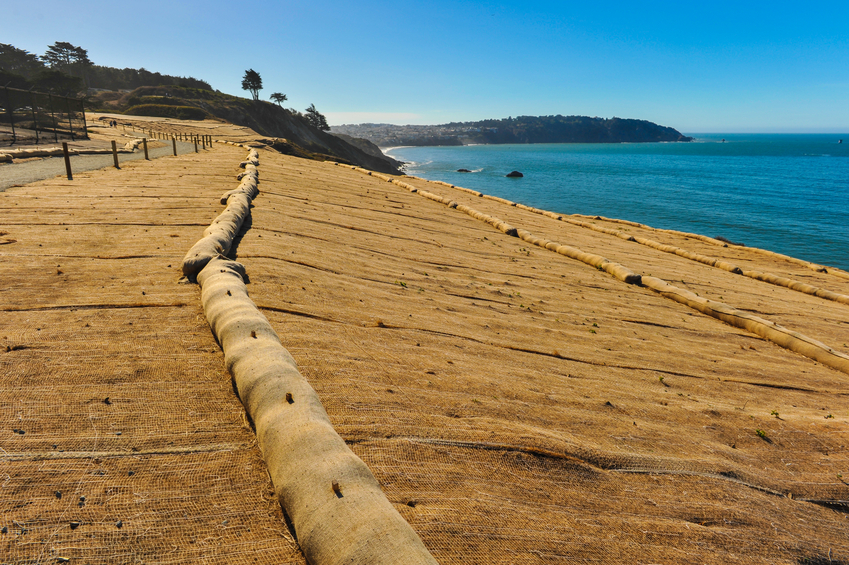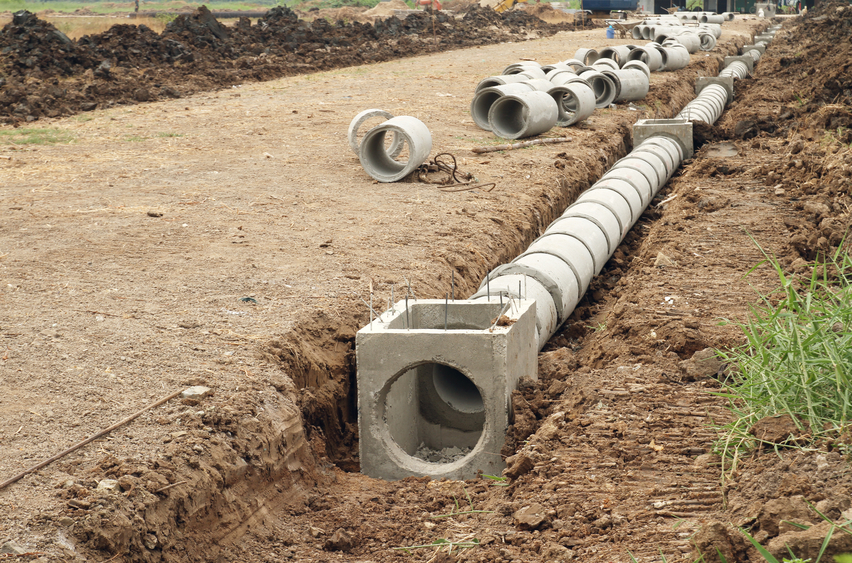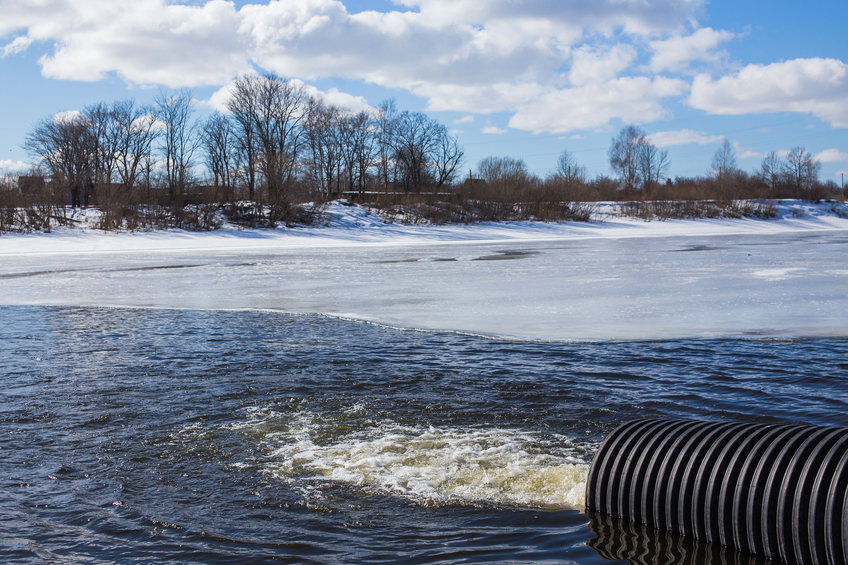Pennsylvania Stormwater and Ethics 24 PDH Discount Package 3
Construction Site Storm Water - Runoff Control (C02-001)
Construction Site Storm Water - Sediment Control (C02-002)
An Introduction to Stormwater Drainage and Site Development (C03-042)
Storm Water Pollution Prevention - Materials Management (C02-005)
Stormwater Best Management Practice Design: Overview (C06-004)
Storm Water Pollution Prevention Plans for NPDES Construction Sites (C05-009)
General Principles of Engineering Ethics (LE2-016)

This online engineering PDH course describes the types and methods of construction site housekeeping practices, applicability, maintenance and cost considerations.
Erosion and sedimentation related to construction site storm water runoff can significantly affect the aquatic population and hydraulic characteristics of the receiving waters. Alterations in hydraulic characteristics of streams receiving runoff include higher peak flow rates, increased frequency and duration of bankfull and subbankfull flows, increased occurrences of downstream flooding, and reduced baseflow levels.
EPA recognizes that such alterations can be prevented by implementing an effective storm water management program. Therefore the EPA published the Storm Water Phase II Rule on
This 2 PDH online course is applicable to municipality owners and/or operators, construction contractors/workers, site developers, engineers, managers, and all other personnel involved in the implementation of good housekeeping practices for storm water runoff from construction sites.
This PE continuing education course is intended to provide you with the following specific knowledge and skills:
- Types and methods of construction site good housekeeping practices
- Applicability
- Siting and design criteria/implementation
- Maintenance and cost considerations
- Effectiveness and limitations
In this professional engineering CEU course, you need to review EPA’s Best Management Practice relating to the “Good Housekeeping” section of the “Construction Site Storm Water Runoff Control”. This section of the BMP addresses the following “Good Housekeeping” methods:
- General Construction Site Waste Management
- Spill Prevention and Control Plan
- Vehicle Maintenance and Washing Areas
- Contractor Certification and Inspector Training
- Construction Reviewer
- BMP Inspection and Maintenance
- Model Ordinances
Once you complete your course review, you need to take a multiple-choice quiz consisting of ten (10) questions to earn 2 PDH credits. The quiz will be based on the “Good Housekeeping” section of this EPA publication.
Upon successful completion of the quiz, print your Certificate of Completion instantly. (Note: if you are paying by check or money order, you will be able to print it after we receive your payment.) For your convenience, we will also email it to you. Please note that you can log in to your account at any time to access and print your Certificate of Completion.

This online engineering PDH course addresses EPA's BMP for the protection of wetlands and aquatic ecosystems, protection of public health, flood control and more.
Erosion and sedimentation related to construction site storm water runoff can significantly affect the aquatic population and hydraulic characteristics of the receiving waters. Alterations in hydraulic characteristics of streams receiving runoff include higher peak flow rates, increased frequency and duration of bankfull and subbankfull flows, increased occurrences of downstream flooding, and reduced baseflow levels.
EPA recognizes that such alterations can be prevented by implementing an effective storm water management program. Therefore the EPA published the Storm Water Phase II Rule on
This 2 PDH online course is applicable to municipality owners and/or operators, construction contractors/workers, site developers, engineers, managers, and all other personnel involved in the implementation of runoff controls for storm water runoff from construction sites.
This PE continuing education course is intended to provide you with the following specific knowledge and skills:
- Types and methods of runoff control systems
- Applicability
- Siting and design criteria
- Maintenance and cost considerations
- Effectiveness and limitations
In this professional engineering CEU course, you need to review EPA’s Best Management Practice relating to the “Runoff Control” section of the “Construction Site Storm Water Runoff Control”. This section of the BMP addresses the following runoff control methods:
- Land Grading
- Permanent Diversions
- Preserving Natural Vegetation
- Construction Entrances
- Check Dams
- Filter Berms
- Grass-Lined Channels
- Riprap
Once you complete your course review, you need to take a multiple-choice quiz consisting of fifteen (15) questions to earn 2 PDH credits. The quiz will be based on the “Runoff Control” section of this EPA publication.
Upon successful completion of the quiz, print your Certificate of Completion instantly. (Note: if you are paying by check or money order, you will be able to print it after we receive your payment.) For your convenience, we will also email it to you. Please note that you can log in to your account at any time to access and print your Certificate of Completion.

This online engineering PDH course addresses EPA's BMP for improved quality of receiving water bodies, conservation of water resources, flood control and more.
Erosion and sedimentation related to construction site storm water runoff can significantly affect the aquatic population and hydraulic characteristics of the receiving waters. Alterations in hydraulic characteristics of streams receiving runoff include higher peak flow rates, increased frequency and duration of bankfull and subbankfull flows, increased occurrences of downstream flooding, and reduced baseflow levels.
EPA recognizes that such alterations can be prevented by implementing an effective storm water management program. Therefore the EPA published the Storm Water Phase II Rule on
This 2 PDH online course is applicable to municipality owners and/or operators, construction contractors/workers, site developers, engineers, managers, and all other personnel involved in the implementation of sediment control for storm water runoff from construction sites.
This PE continuing education course is intended to provide you with the following specific knowledge and skills:
- Types and methods of sediment control systems
- Applicability
- Siting and design criteria
- Maintenance and cost considerations
- Effectiveness and limitations
In this professional engineering CEU course, you need to review EPA’s Best Management Practice relating to the “Sediment Control” section of the “Construction Site Storm Water Runoff Control”. This section of the BMP addresses the following “Sediment Control” methods:
- Temporary Diversion Dikes
- Wind Fences and Sand Fences
- Brush Barrier
- Silt Fence
- Sediment Filters and Sediment Chambers
- Sediment Trap
- Strom Drain Inlet Protection
Once you complete your course review, you need to take a multiple-choice quiz consisting of fifteen (15) questions to earn 2 PDH credits. The quiz will be based on the “Sediment Control” section of this EPA publication.
Upon successful completion of the quiz, print your Certificate of Completion instantly. (Note: if you are paying by check or money order, you will be able to print it after we receive your payment.) For your convenience, we will also email it to you. Please note that you can log in to your account at any time to access and print your Certificate of Completion.

This online engineering PDH course provides an introduction to stormwater drainage systems and improvements for land development projects, as well as design strategies and considerations in site development.
Stormwater drainage systems include surface drainage systems, underground drainage systems, stormwater management facilities, and erosion and sediment control systems. The design of the stormwater drainage system and management addresses several elements including stormwater management plan, temporary and permanent erosion and sediment control practices, site grading, utilization of overland flow and natural site features, as well as the construction of culverts, ditches, and other drainage structures.
This 3 PDH online course is intended for civil engineers and other design and construction professionals seeking an introduction to stormwater drainage and site development strategies.
This PE continuing education course is intended to provide you with the following specific knowledge and skills:
-
Learning about approaches to stormwater roof drainage
-
Learning how to manage surface storm drainage systems
-
Understanding the fundamental features and structures for underground storm drainage systems
-
Understanding the fundamentals management of site drainage systems
-
Knowing the design principles for pump stations
-
Learning about safety considerations relative to stormwater drainage
-
Learning about security issues with drainage systems
-
Learning about generator leads and switch yards
-
Learning about special considerations for runways and taxiways for airfield drainage
-
Knowing how to approach site development projects comprehensively
In this professional engineering CEU course, you need to review the course document titled, "An Introduction to Stormwater Drainage and Site Development".
Upon successful completion of the quiz, print your Certificate of Completion instantly. (Note: if you are paying by check or money order, you will be able to print it after we receive your payment.) For your convenience, we will also email it to you. Please note that you can log in to your account at any time to access and print your Certificate of Completion.

This online engineering PDH course presents EPA's stormwater best management practice for the protection of wetlands and aquatic ecosystems and conservation of water.
Municipal operations can adversely affect the water quality system due to pollutant runoff from various activities such as park and open space maintenance, fleet and building maintenance, new construction and land disturbances, and storm water system maintenance.
EPA recognizes that storm water pollution resulting from municipal activities can be prevented or reduced by implementing an effective storm water operations and maintenance program. Therefore the EPA published the Storm Water Phase II Rule on
This 2 PDH online course is applicable to municipality owners and/ or operators, construction contractors/workers, site developers, engineers, managers, and all other personnel involved in the implementation of good housekeeping practices (materials management) for municipal operations.
This PE continuing education course is intended to provide you with the following specific knowledge and skills:
- Types and methods of materials management and good housekeeping
- Applicability
- Siting and design criteria
- Maintenance and cost considerations
- Effectiveness and limitations
In this professional engineering CEU course, you need to review EPA’s Best Management Practice relating to the “Materials Management” section of the “Pollution Prevention/Good Housekeeping for Municipal Operations” provided below. This section of the BMP addresses the following:
- Alternative Products
- Hazardous Material Storage
- Road Salt Application and Storage
- Spill Response and Prevention
- Used Oil Recycling
- Materials Management
Once you complete your course review, you need to take a multiple-choice quiz consisting of ten (10) questions to earn 2 PDH credits. The quiz will be based on this EPA publication.
Upon successful completion of the quiz, print your Certificate of Completion instantly. (Note: if you are paying by check or money order, you will be able to print it after we receive your payment.) For your convenience, we will also email it to you. Please note that you can log in to your account at any time to access and print your Certificate of Completion.

This online engineering PDH course provides an overview of wet weather flow impacts on receiving waters, regulations that impact stormwater BMP design, design concepts and BMP types and selection.
The goals and objectives of best management practice (BMP) for stormwater management are as diverse as the situations to which they are applied.
This 6 PDH online course is applicable to civil and geotechnical engineers, site developers, and contractors as well as design and construction personnel involved with the planning and design of stormwater systems.
This PE continuing education course is intended to provide you with the following specific knowledge and skills:
- Wet weather flow impacts including physical, chemical and biological
- Overview of Federal, State and Municipal regulations
- BMP performance goals and objectives
- Hydrologic concepts
- Peak discharge control strategies
- Water quality control strategies
- BMP types and selection
- Watershed and other factors influencing stormwater management decisions
In this professional engineering CEU course, you need to review Sections 1 through 5 of the US Environmental Protection Agency (EPA) Publication EPA/600/R-04/121, "Stormwater Best Management Practice Design Guide: Volume 1 General Considerations".
Upon successful completion of the quiz, print your Certificate of Completion instantly. (Note: if you are paying by check or money order, you will be able to print it after we receive your payment.) For your convenience, we will also email it to you. Please note that you can log in to your account at any time to access and print your Certificate of Completion.

This online engineering PDH course introduces the reader to the development of construction site Stormwater Pollution Prevention Plans (SWPPP). A SWPPP is required for coverage under the National Pollutant Discharge Elimination System (NPDES) Construction Site General Permit.
Development inevitably causes some degree of disturbance and compaction of the soil, the loss of vegetation density, impacts to natural habitats and the creation of impervious surfaces. All too often ordinances requirements result in a site layout that does not take into consideration the most valuable aspects of a site. Water quality, habitat, and critical ecological features can be lost if sites are fit to a development, rather than fitting a development to a site.
The most critical requirement of the NPDES permit is the preparation and implementation of a SWPPP. The NPDES program has specific requirements for items that must be addressed in a SWPPP. Understanding the requirements for the creation and implementation of a SWPPP is essential to staying in compliance with the law. The SWPPP serves many functions: NPDES permit conditions require it, it provides documentation of compliance, and ultimately if properly designed and implemented it provides the direction to reduce water quality impacts.
This 5 PDH online course is applicable to practicing engineers, contractors, developers, regulators, and all other personnel involved with construction sites.
This PE continuing education course is intended to provide you with the following specific knowledge and skills:
- When and why you need a SWPPP
- What elements are required in a SWPPP
- Fundamentals of the erosion process
- Developing a SWPPP using site analysis and planning
- Proper selection of Best Management Practices
- Certification and Notification requirements
- SWPPP Implementation
In this professional engineering CEU course, you need to review the EPA publication "Developing Your Stromwater Pollution Prevention Plan" (833-R-060-04).
Upon successful completion of the quiz, print your Certificate of Completion instantly. (Note: if you are paying by check or money order, you will be able to print it after we receive your payment.) For your convenience, we will also email it to you. Please note that you can log in to your account at any time to access and print your Certificate of Completion.

This online engineering PDH course presents the principles of engineering ethics that every engineer is expected to live by when practicing their profession.
Engineering ethics is (1) the study of moral issues and decisions confronting individuals and organizations involved in engineering and (2) the study of related questions about moral conduct, character, ideals and relationships of peoples and organizations involved in technological development (Martin and Schinzinger, Ethics in Engineering).
This course describes the fundamental legal concepts with which very engineer should be familiar. It also presents unique disciplinary case studies selected from across the nation, as well as hypothetical ethical challenges that demonstrate how difficult it can be to apply the code of ethics for engineers.
This 2 PDH online course is applicable to all professional engineers who are either required to fulfill 2 PDH in engineering ethics or are interested in broadening their understanding of what it means to practice and uphold the honor and integrity of their engineering profession while holding the utmost safety, health, and welfare of the public.
This PE continuing education course is intended to provide you with the following specific knowledge and skills:
- Understanding the common definition of ethics regarding engineering
- Learning about the important principles of the engineer’s professional responsibility
- Learning the do’s and don’ts through several ethical and disciplinary cases
- Understanding what it means to practise and uphold the honor and integrity of the engineering profession
Upon successful completion of the quiz, print your Certificate of Completion instantly. (Note: if you are paying by check or money order, you will be able to print it after we receive your payment.) For your convenience, we will also email it to you. Please note that you can log in to your account at any time to access and print your Certificate of Completion.